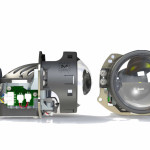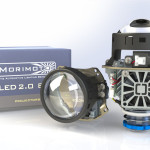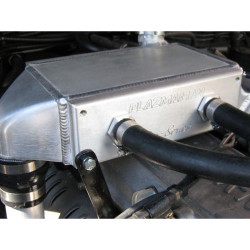
In the realm of off-roading and 4x4 vehicles, achieving optimal engine performance and maintaining consistent power output is crucial. As engines generate heat during operation, efficient cooling systems are necessary to prevent overheating and potential damage. One popular solution that has gained traction among off-road enthusiasts is the water-to-air intercooler. This article delves into the benefits, functionality, and advantages of utilizing water-to-air intercoolers in 4x4 vehicles.
Water-to-air intercoolers offer a compelling solution for 4x4 vehicles, combining efficient cooling capabilities with compact design and improved performance. By effectively reducing intake temperatures and mitigating heat-related issues, these intercoolers contribute to enhanced engine reliability, increased power output, and improved overall driving experience. As technology advances, water-to-air intercoolers are likely to become even more prevalent, pushing the boundaries of off-road performance in the realm of 4x4 vehicles.
What is a Water-to-Air Intercooler?
A water-to-air intercooler, also known as an air-to-water intercooler, is an upgraded cooling system component commonly used in high-performance applications, including 4x4 vehicles. Unlike traditional air-to-air intercoolers that utilize ambient air for cooling, water-to-air intercoolers employ a heat exchange mechanism that utilizes water as the primary cooling agent.
Functionality and Benefits
Enhanced Heat Dissipation: Water possesses higher thermal conductivity compared to air, enabling it to absorb and dissipate heat more effectively. This characteristic allows water-to-air intercoolers to cool the compressed air passing through them more efficiently, resulting in lower intake temperatures.
Compact Design
Water-to-air intercoolers tend to be more compact in size compared to their air-to-air counterparts. This compactness allows for easier installation and integration into the limited space available in 4x4 vehicles, ensuring minimal impact on the overall weight distribution.
Faster Response
The efficient cooling provided by water-to-air intercoolers reduces the overall volume of the charge air, resulting in decreased turbo lag. This faster response enhances throttle response and improves acceleration, making it an attractive choice for off-road enthusiasts seeking quick and agile performance.
Improved Power Output
Lowering the intake air temperature through effective intercooling enhances the engine's volumetric efficiency. Cooler air is denser, allowing the engine to burn more fuel and produce a higher power output without compromising reliability or longevity.
Durability and Reliability
Water-to-air intercoolers are less susceptible to external factors such as ambient temperature variations, ensuring consistent performance regardless of external conditions. Additionally, the closed-loop water circulation system reduces the risk of heat soaking during extended off-road excursions.
Installation and Maintenance
Installing a water-to-air intercooler in a 4x4 vehicle requires expertise and a careful selection of compatible components. Seek professional guidance or consult experienced enthusiasts to ensure proper fitment and performance optimization.
Maintenance involves periodically checking the coolant levels, inspecting the intercooler for leaks, and cleaning the heat exchanger surfaces to remove any dirt or debris that may hinder heat transfer. Regular maintenance will help preserve the intercooler's efficiency and extend its lifespan.














































































-1000x1000w-150x150.jpg)
-1000x1000w-150x150.jpg)





-1000x1000w-250x250.jpg)



-1000x1000w-250x250.jpg)

-1000x1000w-250x250.jpg)

-1000x1000w-250x250.jpg)
Leave a comment